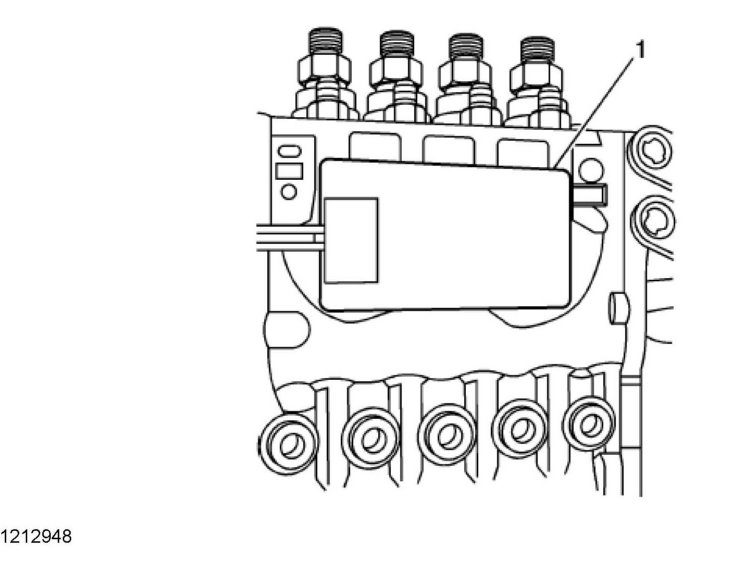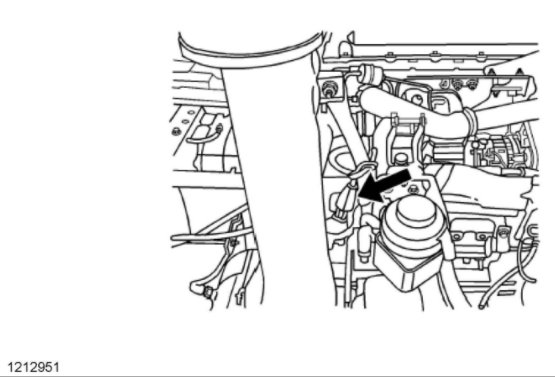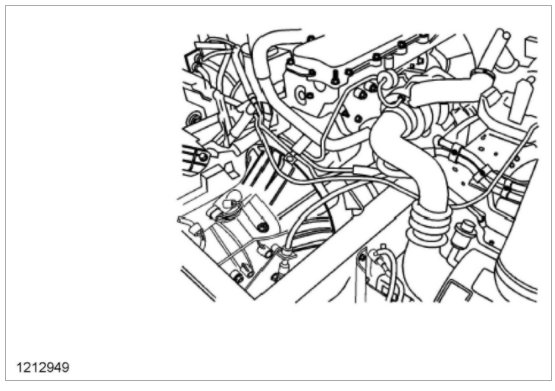It sounds like you need to rebuild the injector pump here is a service builtin and some diagrams (Below) that should help you get the problem fixed.
Service Information
Condition:
Some of the above-listed vehicles may exhibit a no-start condition in extremely cold weather (temperatures below 0°C (32°F).
Correction:
A new injection pump heater pad is now available to address this condition.
Injection Pump Heater Pad Usage
The purpose of the injection pump heater pad is to maintain an above-freezing (0°C, 32°F) temperature. The heater pad is not intended for quick heating of the injection pump.
The heater pad should be plugged in at night (end of day) prior to when the evening temperature is expected to drop below freezing.
Then, the heater pad should be unplugged in the morning prior to starting the vehicle.
The heater pad operation time is overnight.
Use the following procedure and part number to install an injection pump heater pad. The injection pump heater pad installs onto the back side of the injection pump. Refer to the Isuzu Engine sub-section of the 1999-2001 Isuzu Commercial Truck 4HEI - TC Engine Service Manual for additional important procedure instructions and information regarding intake manifold removal.
Injection Pump Heater Pad Installation
1. Tilt the cab forward.
2. Remove the engine cover.
3. Remove the injector fuel lines.
4. Disconnect the air duct from the intake manifold.
5. Remove the vacuum lines from the intake manifold, the EGR valve and the throttle valve.
IMPORTANT :
Do not damage the rubber manifold gasket seal. This seal will be reused.
6. Remove the intake manifold.
7. Thoroughly clean the back side of the injection pump (Refer to the arrow in the illustration). Remove all dirt, grease and oil. Use an abrasive pad to remove any material. You must have a clean bare metal surface.
8. Install the injection pump heater pad (1) on the injection pump so that the harness is positioned toward the rear of the vehicle.
9. Remove the covering from the pressure sensitive adhesive on the heater pad. Avoid touching the adhesive if possible.
10. Plug the heater pad into an 110 volt three-prong outlet for 3-5 seconds in order to warm the pad.
11. Unplug and apply the pad. Start with the opposite edge from the cord.
12. Using the squeegee provided, apply pressure to affix the heater pad. Avoid wrinkling while smoothing the pad if possible.
13. Plug in the heater for 5-10 seconds. Unplug and squeegee again.
14. Route the harness behind the engine along the power steering lines, then to the frame rail and up to the air cleaner. Position the plug for the heater pad in the same location as the block heater for easy access.
15. Install the previously removed intake manifold rubber seal and the intake manifold to the engine. Replace the seal if damaged.
16. Install the injector fuel lines. Make sure that there is no dirt or foreign material on the lines or fittings during installation.
17. Install the vacuum hoses for the intake manifold, the EGR valve and the throttle valve.
18. Connect the air duct to the intake manifold.
19. Bleed the fuel system.
20. Start the engine. Inspect for leaks.
The heater pad can be used immediately.
Please let us know if you need anything else to get the problem fixed.
Cheers, Ken
Images (Click to make bigger)
Thursday, October 12th, 2017 AT 12:24 PM








